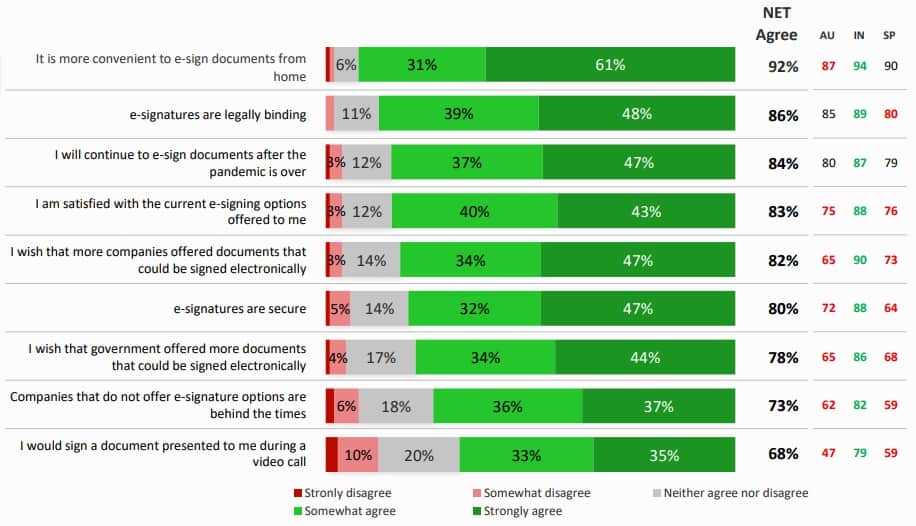New research from Adobe has found that young people are driving the growth in digital document use and e-signatures, while increases were seen across all generations as many people e-signed for the first time in 2020.
The Asia-Pacific section of the Document Cloud E-Signature Survey by Adobe Digital Insights revealed that 76% of APAC respondents confirmed having e-signed more documents in the last six months of 2020 compared to late 2019 and early 2020.
Who is signing what?
At 61% millennials lead the way in using e-signatures. Insurance policies (43%) and healthcare registration (38%) were the most common documents to be e-signed in APAC. While business contracts were the most popular type of document to be e-signed in India (77%), it was less common to e-sign them in Singapore (57%). In Australia, legal agreements had the highest instance of e-signing (76%) whereas it was the least popular type of document to e-sign in India (49%). Insurance policies and renewal contracts were by far the most popular document to sign digitally in Singapore (81%).
Typing name or initials is the most common way of e-signing in Australia (58%), while uploading a saved image is more common in India (58%) and Singapore (54%). Most (84%) will continue to e-sign post-pandemic.
“The global pandemic changed what it means to be productive,” said Simon Dale, managing director of Adobe Southeast Asia. “Digital documents have become the currency of business productivity – the centrepiece for how businesses, governments and consumers communicate, collaborate and transact, thereby setting the agenda for the future economy.”
He added that “COVID-19 has brought new urgency to keeping businesses afloat, and we have made it our mission to support their resiliency and reimagine how work gets done in the future.”
Different ways but the same intent
The way respondents e-sign varies between APAC markets. In Australia, the most common method of e-signing consists of typing a name or initials (58%) whereas in India (58%) and Singapore (54%) most respondents uploaded a signature image they had saved on their computer.
Across the region, the markets agreed that checking a box was not deemed an acceptable method for e-signing. In Australia, accepting an e-signature created for you also has lower acceptability and is infrequently used.
The pandemic pushed 34% of APAC respondents to exclusively store their data digitally. Also 36% saved documents both digitally and physically, and indicated feeling safer for having a digital backup of physical documents. Most digital documents were stored on computer or cloud, with cloud storage being most common among Generation Z (65%).
While signing and storage methods vary, security features are important to APAC participants across all generations. More than two thirds (71%) expect documents to be password protected and over half (57%) think documents require 2-factor authorisation.
Staying for good

E-Signature study (December 2020)
Base: APAC (1,006): a5 - Please indicate if you agree or disagree with the following statements
Ninety-two per cent of APAC respondents agreed that e-signatures are convenient, secure (80%) and legally binding (86%) and that they intend to continue using them post-pandemic (84%). Millennials are most satisfied with the options currently offered and would like to see e-sign used more widely.
With 82% of APAC respondents reporting their wish for companies and governments (78%) to offer more documents with digital signatures, there is an opportunity for the public and private sector to improve citizen and customer experience through the adoption of digital workflows.
As the pandemic fades into history, many of the digital changes it introduced and accelerated will remain. Nonetheless, there are opportunities to innovate how companies manage and sign documents. Majority of APAC respondents (73%) believe that companies lacking e-signature options are behind in the times. And globally, fewer than 47% of survey respondents believe that e-signature technology is advanced today.
Given the consumer trend the ball is on organisations to keep up.





